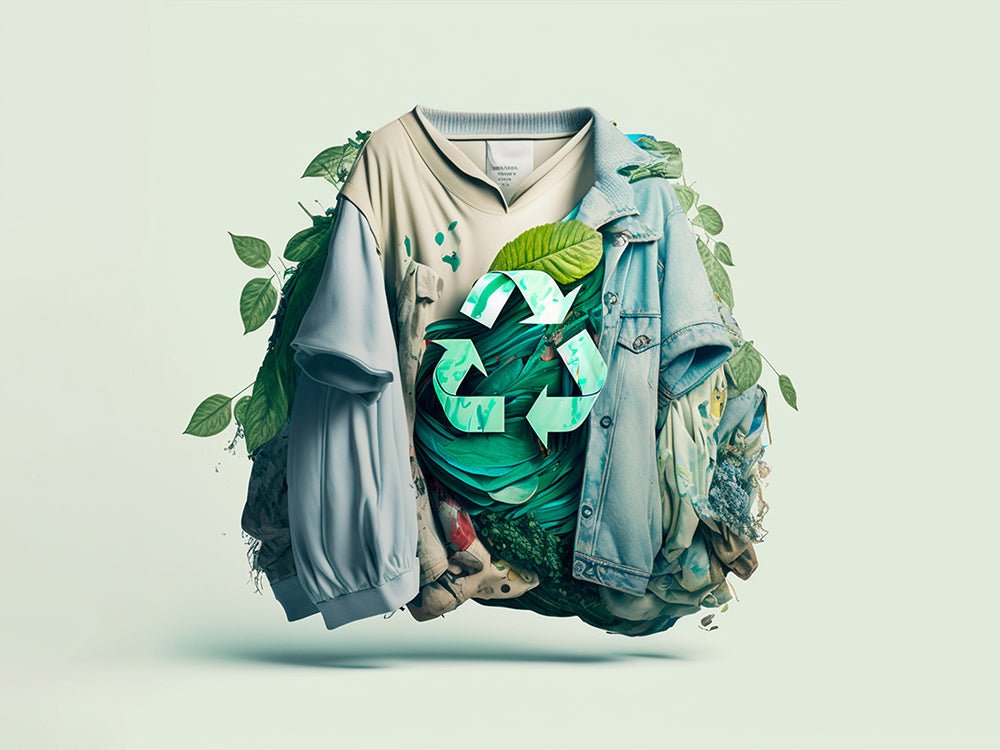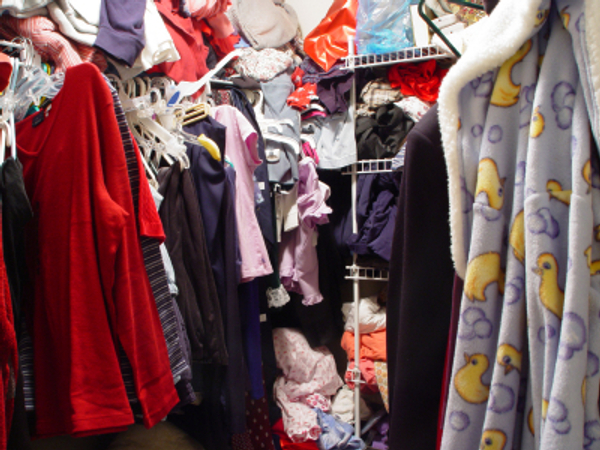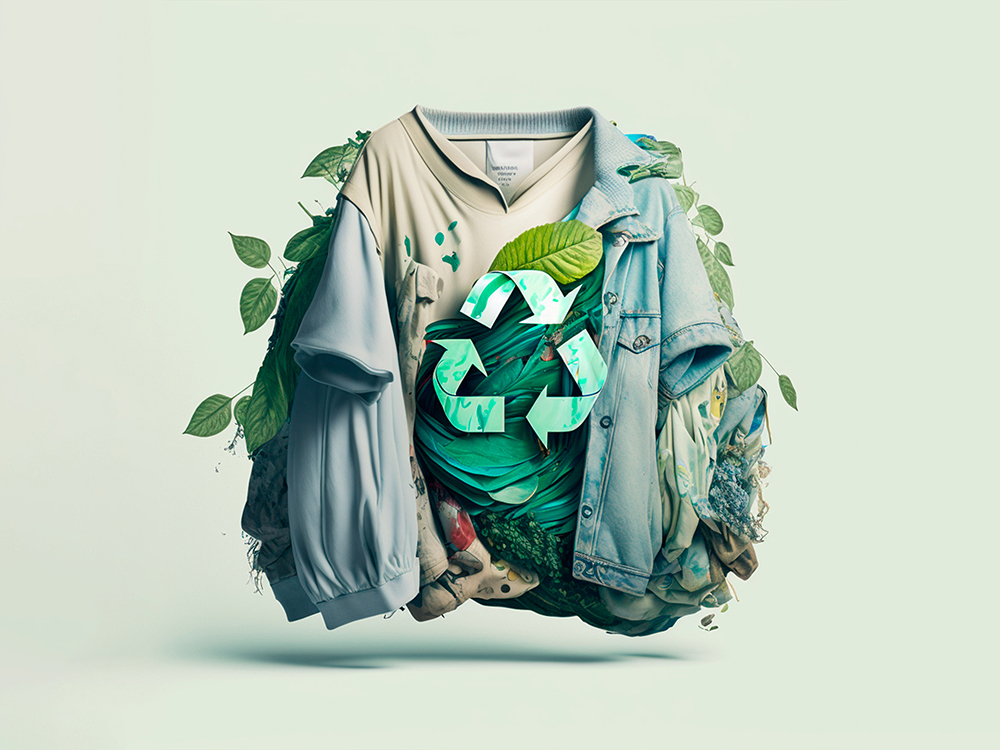Share
The Environmental Impact of the Fashion Industry

Environment vs. Fashion & Sustainability
Fashion and sustainability are subjects close to the heart of our business model, at Fashion Aftermath.
Everything from the colours, shapes and textures to the creativity and transformation.
Sustainability also plays a key part in our daily lives as we face a future damaged by overconsumption.

The Fashion Industry's Environmental Footprint
The fashion industry's impact on the environment is extensive.
A vast amount of resources used during textile production has contributed to the environmental crisis.
From water-intensive crops like cotton to energy-consuming manufacturing processes, the fashion supply chain guzzles natural resources at an alarming rate.
Furthermore, the chemicals used in the dyeing process become toxic waste when dumped into rivers and oceans.
The water becomes polluted and has detrimental effects on health and climate.
The carbon footprint of the fashion industry is considerable.
From the start with sourcing, producing and transporting the raw materials to manufacturing and processing the finished products, all which contributes to greenhouse gas emissions.
Fast Fashion & its Ecological Traces
The rise of fast fashion has exacerbated the fashion industry's environmental impact.
Fast fashion brands churn out low-quality, cheap clothing at an astonishing pace, enticing consumers to buy more and more.
This 'throwaway culture' has led to a sharp increase in clothing waste.
Surprisingly, a significant portion of these garments ends up in landfills or incinerators which contributes to the release of harmful chemicals and greenhouse gases.
The chase of novelty in styles and trends has devoured the demand for resources, pushing the fashion industry to exploit natural resources to their limits in their pursuit of textiles and materials.
This leads to fast fashion fostering a culture of overconsumption where clothing is treated as disposable commodities rather than valuable possessions.

A Wardrobe of Unworn Clothing, Useless Disposal
It is essential to highlight that we already possess enough clothing on Earth to clothe generations to come.
The fashion industry's overproduction has resulted in an excess of unworn and discarded garments.
This leads to wardrobes becoming filled with items that rarely see the light of day, resulting in a waste of resources and contributing to the vicious cycle of overconsumption.
Consumers' fascination with novelty as frequent replacements has amplified this issue.
The pressure to keep up with trends and the constant bombardment of advertising has fueled excessive buying habits, often leading to impulsive purchases and hoarding tendencies.

The Path Toward Sustainability: Fashion
Given the climate crisis, the fashion industry must pivot towards sustainable practices.
The future of fashion lies in embracing a circular economy: reduce, reuse, recycle and upcycle.
Reduce Clothing
The first step towards sustainability is to reduce overproduction.
Brands should embrace mindful production practices, creating clothing with durability in mind.
Implementing effective manufacturing processes and ethically sourced materials made with quality.
Reuse Your Clothes
Encouraging consumers to buy second-hand clothing and to swap or lend clothing can significantly reduce the demand for new apparel, as well as repairing small rips and tears will prolong a garment's life.
Going thrifting and vintage shopping is increasingly popular among the younger generations as they prioritize sustainability in their consumption.
Achieving a unique style is a bonus.
Recycle Your Old Garments
Implementing recycling programs for textiles can save clothing from landfills.
Recycling tech, such as converting old clothing into new fibres, presents solutions to reduce the fashion industry's consumption of virgin resources.
Repurposing materials is a way of recycling, however this moves the garment to a different circular system.
Designers and brands can explore innovative fabrics sourced sustainably from recycled or organic materials to create stylish, environmentally responsible clothing.
Upcycle Outdated Textiles
Embracing upcycling allows designers to breathe new life into old garments, transforming them into unique, one-of-a-kind pieces.
Upcycling
Upcycling promotes creativity in limitation, reduces waste which helps the planet and encourages a more mindful approach to fashion design.
Embracing Style & Sustainability
The move to sustainable fashion requires collaboration among all stakeholders in the industry.
Fashion brands must take the lead in adopting eco-friendly practices, committing to transparency, and setting ambitious sustainability goals.
Consumers play a pivotal role in this transformation by making conscious purchasing decisions and demanding more sustainable options from brands.
Self-education and having a conscious awareness also play a vital role in shifting consumer mindsets.
The lack of transparency is a common occurrence throughout the industry.
Governments, NGOs, and educational institutions can advocate for sustainable fashion practices, promoting ethical consumption and emphasizing the need to reduce clothing waste.
Reduce, Reuse, Recycle Clothing: Enter a World of Vintage
The fashion industry's harmful impact on the environment cannot be ignored any longer.
Studies have concluded that there is enough clothing already on Earth to last generations.
For there to be a future in fashion, we must adopt sustainable, circular practices.
From reducing overproduction to embracing recycling and upcycling, the industry must rethink its approach to design, production, and consumption.
As consumers, we have the power to drive change through the choices we make.
By supporting sustainable fashion and rejecting the notion of 'throwaway culture,' we can add to a cleaner, greener future for the fashion industry and our planet.
The time to act is now, and together we can create a more sustainable and creative fashion community that celebrates creativity while protecting the Earth's precious resources.
More Resources
BBC How Clothes Are Linked To Climate Change
Fashion Revolution - Transparency
buy recycled, sustainable fashion at Fashion Aftermath online.








